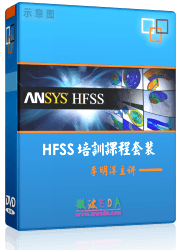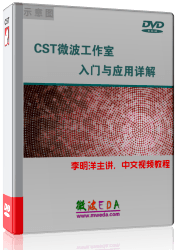MPI Cluster
Solver  Start Simulation Start Simulation  Acceleration... Acceleration...  MPI Properties... MPI Properties...
If you are not familiar with MPI, with what it does and what is used
for, it is recommended to read the introductory section on MPI simulation
MPI
Simulation Overview.
In this dialog the cluster and machine properties for an MPI simulation
can be set. In particular it is required to define the host name of the
machines which should be used for the simulation, their local (or shared)
CST STUDIO SUITE installation folder, the temporary
folder used to store data during the simulation run and the specific machine
operating system (i.e. Linux, Windows), and architecture (i.e. IA32 or
AMD64 bit).
Moreover, all this information can be stored and retrieved, if desirable,
for later reuse and to ease the setup procedure.
Default cluster setting frame
In this frame the user can define global (default)
settings which will be used and applied for all defined machines in the
MPI cluster. These default values are inherited unless the user specifies,
for a particular node, local or specific settings.
Global settings can also be left empty or in
鈥漴;unset鈥?status. It is important to note that a setting which is not
defined in the global settings must be defined for each node in the 鈥漴;Cluster
management鈥?section of the dialog.
Install folder: This setting defines the folder where the
CST STUDIO SUITE is installed.
The folder can be a local one (i.e. CST STUDIO SUITE
has been installed on each cluster node), or a 鈥漴;network鈥?folder shared
by all machines. The folder acts, therefore, as depot for the program
files. This second option is desirable mainly to keep updated and consistent
all CST STUDIO SUITE installation
and program files.
Path and folder definition follow the standard
naming convention for Windows and Linux, respectively. Network paths (i.e.
\\RemoteHostName\Subfolder) are also allowed.
Clicking on the browse button opens a dialog
to easily select the installation folder.
Temp folder: This setting specifies the folder which will
be the working directory during the simulation run. This folder should
be an existing local folder on each cluster node. The user account used
to run the MPI simulation must have write access to this folder. The folder
must be already available and created by the user (during the cluster
installation process).
Clicking
on the browse button opens a dialog to easily select the temporary folder.
Architecture:
This setting specifies the processor architecture and the operating system
of the nodes. The information is used to select the correct program file
to be executed.
Inherit all
settings: Pressing this button assigns the corresponding value
of Install Folder, Temp
Folder and Architecture specified
in the Default cluster setting frame,
to all defined nodes. If the Install
Folder or Temp Folder field
is left empty, the corresponding value will not be inherited and not overwrite
settings already made in the list of nodes.
Please note that a similar functionality - in
this case restricted just to the selected field - is activated by pressing
the right mouse button on the column header of Install
Folder, Temp Folder and
Architecture field in the Nodes frame.
Windows to Linux login info frame
In this frame the user can define global (default)
parameters which will be used in case you start an MPI simulation on a
Linux cluster from a Windows machine. The Linux login mechanism actually
requires a "User" and a "Private key file" specification
to allow for a password less access. These default values are inherited
and used for all active Linux nodes.
User:
This setting defines the Linux user which will be used as login to the
Linux cluster.
Private key file:
This setting defines the location of
the "private key file" for the cross platform Windows to Linux
login when starting the MPI cluster.
Cluster management
Test active
nodes: Pressing this button performs a test of the nodes which
are marked as "active" in the list. The test checks in turn
the correct configuration of each active node in terms of the MPI simulation
requirements, i.e. the given host name, installation folder (for the provided
machine architecture) and temporary folder for simulation execution. Depending
on the number of nodes the test may last for some seconds, during which,
as feedback to the user, the button changes its text to "Testing...".
As the test completes, a small report is provided
showing for each node the corresponding test result and, in case, the
reported error or missing setup information.
Update active
nodes: Pressing this button performs an MPI update of the selected
active nodes. Each active node is first checked to compare the build version
number of the remote installation with the reference installation. In
case of non homogeneous build version an automatic update mechanism is
activated. Depending on the number of nodes the update may last for some
time, during which, as feedback to the user, the button changes its text
to "Updating...".
As the update is completed, a small report is
provided showing for each node the result of the update operation and,
in case, the reported error or missing setup information.
Set main controller:
Pressing this button opens a dialog box to set the server name (or IP
address) and port number of the DC Main controller, used to perform the
MPI cluster update.
Nodes frame
In this frame the user may define the host name
of each machine belonging to the MPI cluster. If required it is possible
to define a specific Installation Folder
for each node, Temporary folder
and Architecture which specialize
machine properties with respect to the default values (see previous section).
Moreover the user can activate or deactivate certain nodes for the simulation.
Nodes which are not activated will not participate in the simulation.
The user can also right-click on an entry to
activate further menu options, for instance to check the node definition,
test and retrieve general HW, SW and MPI information or to activate the
update functionality of the remote cluster node.
Additional functions can be accessed by right-clicking
on the grid header columns. In particular it is possible to inherit the
settings defined in the Default cluster
setting frame or to perform the simultaneous activation and deactivation
of all nodes.
Host name:
Type here the host name of a machine belonging to the MPI cluster.
Install folder:
Type here the name of the folder which contains the CST STUDIO SUITE installation.
The folder can be a local or a shared 鈥漴;network鈥?folder. The field is
optional and can be left empty. In this latter case the default install
folder (which therefore should be appropriately set) is employed.
Temp folder:
Type here the folder where the node should store intermediate data during
the simulation run. After each simulation, local data are deleted from
hard disk to save space. The field is optional and can be left empty.
In this latter case the default temporary folder (which therefore should
be appropriately set) is employed.
Architecture:
Select from the combo box the particular machine architecture and operating
system, belonging to the set ("Windows IA32", "Windows
AMD64", "Linux IA32", "Linux AMD64"). It is possible
to just inherit the default global settings with the 鈥漴;Inherit default鈥?
option.
Active:
De/select this check button to activate or deactivate a cluster node.
The number of active nodes is displayed in the Active
nodes edit box.
In current release of CST STUDIO SUITE all active nodes belonging to an MPI cluster (for a
given simulation) must share the same architecture (either inherited from
global or local settings). Therefore only homogeneous machine cluster
can be employed.
Another restriction on the active nodes, for
the current release of CST STUDIO SUITE is that
all Linux based architecture machines belonging to MPI cluster (for a
given simulation) should share the same installation folder, either defined
for the specific node or inherited from the default settings.
Insert:
Pressing this button causes the insertion of a new node right before the
selected node row.
Delete:
Pressing this button causes the deletion of the selected node row.
Clear:
Pressing this button causes the deletion (after user confirmation) of
all inserted node rows.
(DE)Activate
all: This functionality is activated by pressing the right mouse
button on the Active column header
and it is used to activate or deactivate simultaneously all defined cluster
nodes. The number of active nodes is displayed in the Active
edit box.
Inherit default:
This functionality is activated by pressing the right mouse button on
the column header of Install Folder,
Temp Folder and Architecture
field and assigns the settings defined in the Default
cluster setting frame, to all defined nodes. This feature can be
used for quick definition and setting of the whole machine cluster.
Test:
This functionality is activated by pressing the right mouse button and
starts a test of the cluster node in the selected row (independently of
the Active flag). The functionality
is enabled only if the selected node is completely specified in terms
of host name, installation and temporary folder (eventually resorting
to the default cluster settings), otherwise a Incomplete
node definition message is shown.
The test is a functional MPI test checking correctness
of the given host name, installation folder (for the provided machine
architecture) and temporary folder for simulation execution.
If the test completes successfully a small report
on the machine hardware and memory/storage characteristics is provided,
together with the information of eventually recognized GPU hardware. In
case of failure some guidelines on the missing or wrong setup data are
provided.
Update:
This functionality is activated by pressing the right mouse button and
causes the preliminary check of the cluster node build version in the
selected row (independently of the Active
flag). The functionality is enabled only if the selected node is completely
specified in terms of host name, installation and temporary folder (eventually
resorting to the default cluster settings), otherwise a Incomplete
node definition message is shown.
The check is performed to assess the build version
coherence between frontend (used as reference installation) and the node
version. In case of non homogeneous build version an automatic update
mechanism is started.
Cleanup:
This functionality is activated by pressing the right mouse button and
causes the cleanup of the temporary folder on the cluster node in the
selected row (independently of the Active
flag). The functionality is enabled only if the selected node is completely
specified in terms of host name, installation and temporary folder (eventually
resorting to the default cluster settings), otherwise a Incomplete
node definition message is shown.
The cleanup removes only the unused and old
MPI folders still available and found on the cluster node. This may happen
due to some exceptional event as a remote network disconnection, a crash
etc. The functionality enables the folder cleanup without an extra remote
node login.
Load File:
Loads the MPI machine configuration from a text file. The file format
is described in MPI
Machine configuration format.
Export:
Save the actual machine configuration (together with global/default settings)
on disk. The file format is described in MPI
Machine configuration format.
Active nodes
This control shows the number of active nodes
involved in the MPI simulation.
OK
Perform basic checks on cluster definition and,
if correctly defined, store the current settings in the history of the
CST project.
Close
Closes this dialog box without performing any
further action.
Help
Shows this help text.
See also
MPI
Simulation Overview, MPI
Troubleshooting, MPI
Installation




HFSS视频教程
ADS视频教程
CST视频教程
Ansoft Designer 中文教程
|